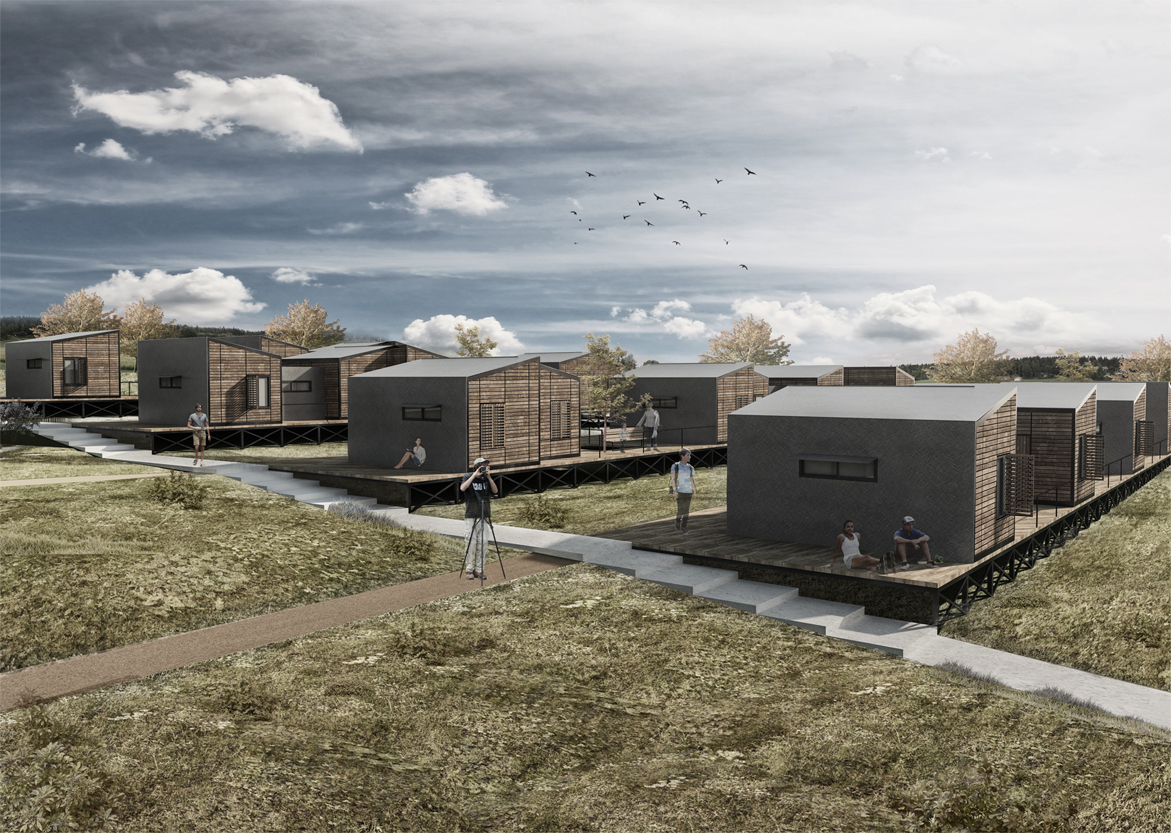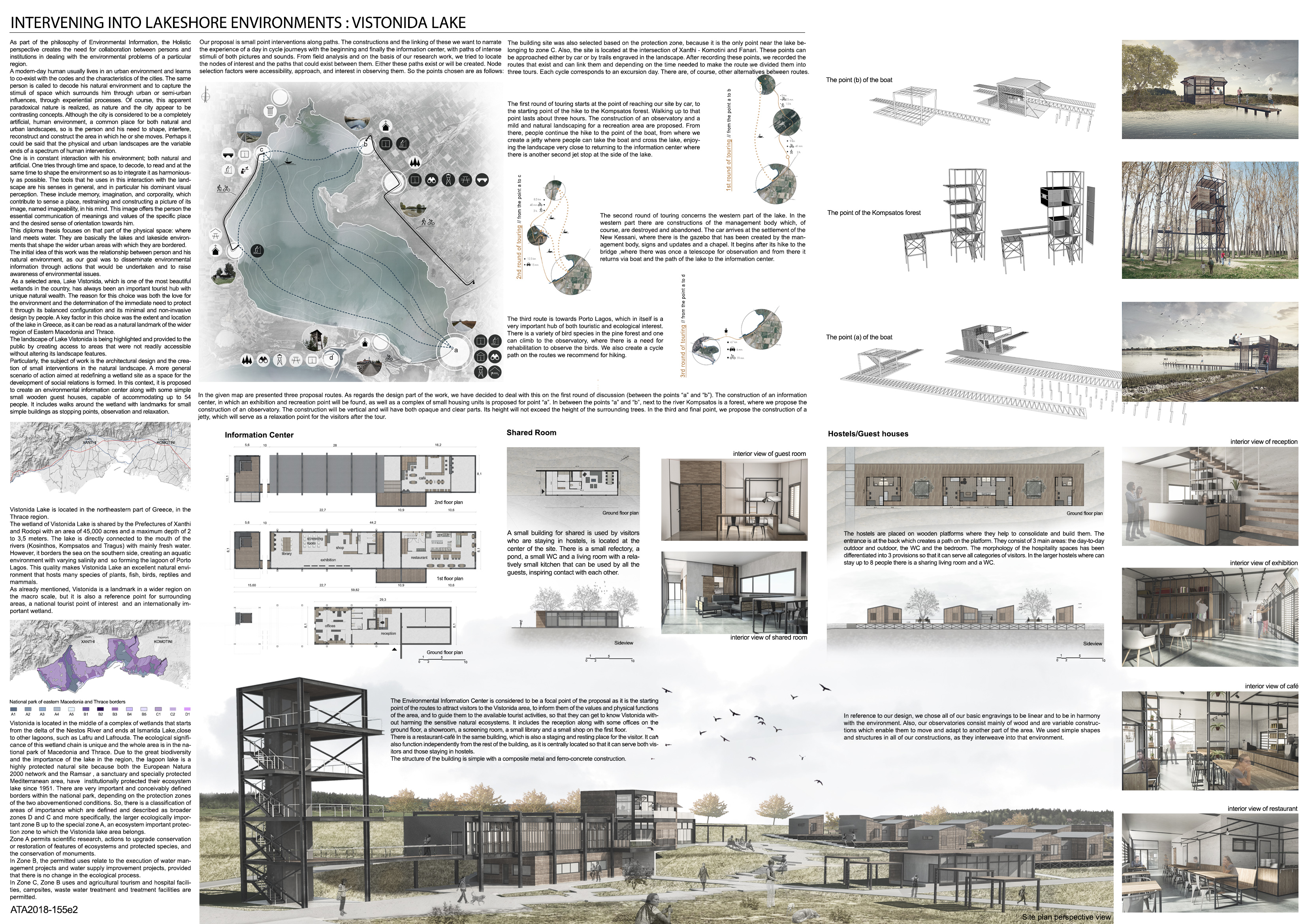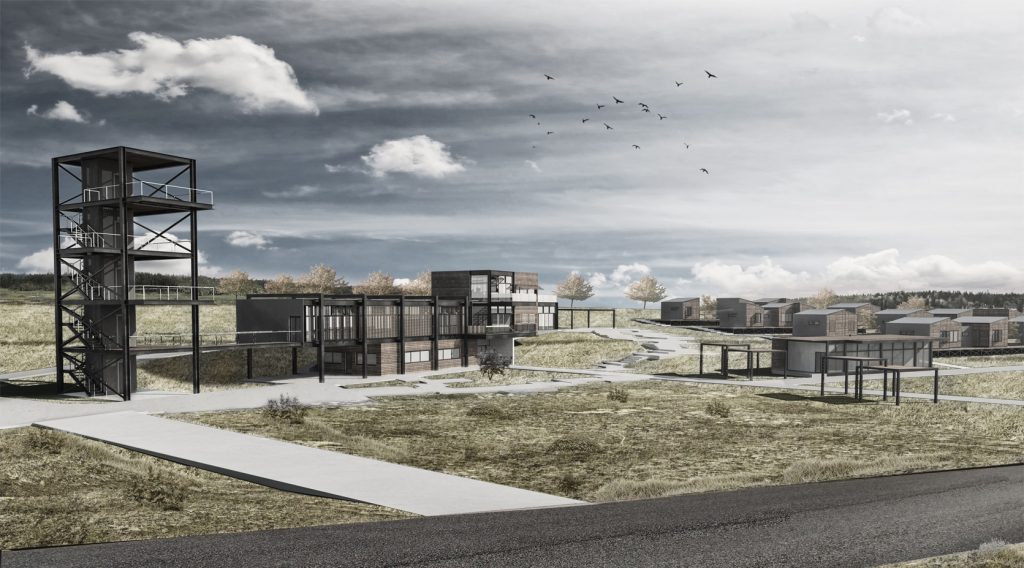This diploma thesis focuses on that part of the physical space: where land meets water. They are basically the lakes and lakeside environments that shape the wider urban areas with which they are bordered.
As part of the philosophy of Environmental Information, the Holistic perspective creates the need for collaboration between persons and institutions in dealing with the environmental problems of a particular region. A modern-day human usually lives in an urban environment and learns to co-exist with the codes and the characteristics of the cities. The same person is called to decode his natural environment and to capture the stimuli of space which surrounds him through urban or semi-urban influences, through experiential processes. Of course, this apparent paradoxical nature is realized, as nature and the city appear to be contrasting concepts. Although the city is considered to be a completely artificial, human environment, a common place for both natural and urban landscapes, so is the person and his need to shape, interfere, reconstruct and construct the area in which he or she moves. Perhaps it could be said that the physical and urban landscapes are the variable ends of a spectrum of human intervention. The initial idea of this work was the relationship between person and his natural environment, as our goal was to disseminate environmental information through actions that would be undertaken and to raise awareness of environmental issues.

As a selected area, Lake Vistonida, which is one of the most beautiful wetlands in the country, has always been an important tourist hub with unique natural wealth. The reason for this choice was both the love for the environment and the determination of the immediate need to protect it through its balanced configuration and its minimal and non-invasive design by people. A key factor in this choice was the extent and location of the lake in Greece, as it can be read as a natural landmark of the wider region of Eastern Macedonia and Thrace. The landscape of Lake Vistonida is being highlighted and provided to the public by creating access to areas that were not readily accessible without altering its landscape features. Particularly, the subject of work is the architectural design and the creation of small interventions in the natural landscape. A more general scenario of action aimed at redefining a wetland site as a space for the development of social relations is formed. In this context, it is proposed to create an environmental information center along with some simple small wooden guest houses, capable of accommodating up to 54 people. It includes walks around the wetland with landmarks for small simple buildings as stopping points, observation and relaxation.

The Board:






